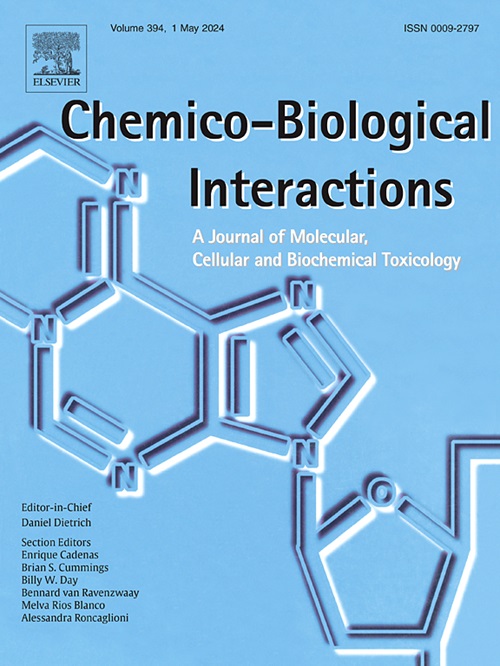桔黄素D通过G蛋白偶联雌激素受体介导的eNOS活性增加一氧化氮,逆转肿瘤坏死因子-α-诱导的内皮功能障碍。
IF 4.7
2区 医学
Q1 BIOCHEMISTRY & MOLECULAR BIOLOGY
引用次数: 0
摘要
桔梗苷D (PCD)是从桔梗(Platycodon grandflorum,桔梗)的根中提取的一种皂苷类物质。答:直流。一种在东方传统医学中使用多年的药用植物。众所周知,PCD具有抗癌、抗氧化和抗肥胖的作用,其对心血管疾病的预防作用,包括抗动脉硬化的特性正在被探索。本研究探讨了PCD对EA.hy926内皮细胞内皮功能障碍的保护作用,特别是在内皮型一氧化氮合酶(eNOS)活性介导的一氧化氮(NO)生成的背景下,并探讨了潜在的分子机制。采用MTT和乳酸脱氢酶、定量PCR、western blotting、单核细胞粘附、免疫荧光、细胞内Ca2+和NO生成检测检测PCD对肿瘤坏死因子-α (TNF-α)引发的内皮功能障碍的影响。PCD通过下调VCAM-1和ICAM-1来减轻TNF-α-诱导的单核细胞-内皮细胞粘附。PCD还通过促进Ca2+/钙调素依赖性蛋白激酶β (CaMKKβ)、Ca2+/钙调素依赖性蛋白激酶Ⅱα (CaMKⅡα)和amp活化蛋白激酶(AMPK)的磷酸化,增加NO的产生和eNOS活性。重要的是,阻断G蛋白偶联雌激素受体(GPER)通过降低三种激酶CaMKKβ、AMPK和CaMKⅡα的磷酸化,抑制NO的产生和pcd触发的eNOS活性。总的来说,PCD通过促进NO的产生,通过eNOS活性促进,缓解TNF-α-诱导的内皮功能障碍。这种上调是由gper依赖的Ca2+/CaMKKβ/AMPK和Ca2+/CaMKⅡα信号通路介导的。这些发现表明PCD作为预防内皮功能障碍和改善心血管健康的治疗药物的潜力。本文章由计算机程序翻译,如有差异,请以英文原文为准。
Platycodin D reverses tumor necrosis factor-α-induced endothelial dysfunction by increasing nitric oxide through G protein-coupled estrogen receptor-mediated eNOS activity
Platycodin D (PCD) is a saponin extracted from the roots of Platycodon grandiflorum (Jacq.) A. DC., a medicinal plant used in Eastern traditional medicine for many years. PCD is known to exert anti-cancer, antioxidant, and anti-obesity effects, and its preventive effects on cardiovascular disease, including anti-arteriosclerosis properties are being explored. This study examined the protective effects of PCD against endothelial dysfunction in EA.hy926 endothelial cells, particularly in the context of nitric oxide (NO) production mediated by endothelial nitric oxide synthase (eNOS) activity, and explored the underlying molecular mechanisms. The effects of PCD on tumor necrosis factor-α (TNF-α)-triggered endothelial dysfunction were examined using MTT and lactate dehydrogenase, quantitative PCR, western blotting, monocyte adhesion, immunofluorescence, intracellular Ca2+, and NO generation assays. PCD alleviated TNF-α-induced monocyte-endothelial cell adhesion via downregulation of VCAM-1 and ICAM-1. PCD also increased NO production and eNOS activity by promoting the phosphorylation of Ca2+/calmodulin-dependent protein kinase β (CaMKKβ), Ca2+/calmodulin-dependent protein kinase Ⅱα (CaMKⅡα), and AMP-activated protein kinase (AMPK). Importantly, blocking G protein-coupled estrogen receptor (GPER) suppressed NO production and PCD-triggered eNOS activity by reducing the phosphorylation of three kinases, CaMKKβ, AMPK, and CaMKⅡα. Overall, PCD alleviates TNF-α-induced endothelial dysfunction by enhancing NO production, facilitated by eNOS activity. This upregulation is mediated by GPER-dependent Ca2+/CaMKKβ/AMPK and Ca2+/CaMKⅡα signaling pathways. These findings indicate the potential of PCD as a therapeutic agent for preventing endothelial dysfunction and improving cardiovascular health.
求助全文
通过发布文献求助,成功后即可免费获取论文全文。
去求助
来源期刊
CiteScore
7.70
自引率
3.90%
发文量
410
审稿时长
36 days
期刊介绍:
Chemico-Biological Interactions publishes research reports and review articles that examine the molecular, cellular, and/or biochemical basis of toxicologically relevant outcomes. Special emphasis is placed on toxicological mechanisms associated with interactions between chemicals and biological systems. Outcomes may include all traditional endpoints caused by synthetic or naturally occurring chemicals, both in vivo and in vitro. Endpoints of interest include, but are not limited to carcinogenesis, mutagenesis, respiratory toxicology, neurotoxicology, reproductive and developmental toxicology, and immunotoxicology.

 求助内容:
求助内容: 应助结果提醒方式:
应助结果提醒方式:


